Body Parts in Farsi
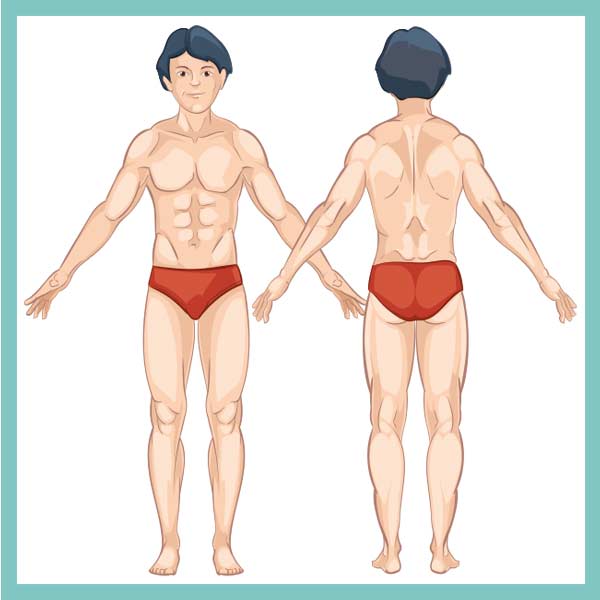
When you come across this page, you may wonder why you need to learn body parts in Farsi at all. The only reason which may come to your mind is visiting a doctor to talk about your probable health issues. This is the most important reason but not the only one. Knowing that most doctors understand English, especially technical terms, you may lose your interest and motivation to learn about body parts. But what if you find out that there are many more other reasons to learn at least a couple of easy and important ones? We can help you to find motivations by telling you where else you can use what you are learning in this part.
- In Farsi, there are many expressions and idioms in which you can find the names of body parts, especially with eye, heart, hand, and head. Some of these expressions are very frequent in daily talks, and some of them may seem weird if you translate them word by word. Let’s take a look at some of them, using hand, “dast”, eye, “čašm”, head, “sar”, and liver, “jigar”.
-
dast-et dard nakone(h): hand-you-pain- not
No pain in your hands. This expression is very frequent and useful. Iranians say this sentence for showing their gratitude. There are many different ways to thank people in different situations. The main function of the sentence is for thanking after eating food. You can add “qazâ xeyli xub bud”, the food was great, to complete your tâ’rof.
-
be ru-ye čašm, or simply čašm: on my eyes
This expression may seem strange at the first glance, especially if you know that there is another expression as “qadametun ru-ye čašm” your feet are on my eyes. But do not worry, no one is going to step on your eyes or harm your eyes in any other way. “čašm” is an answer to a request. For instance, if you ask an Iranian to do a favor for you, you may hear “čašm” which means I am going to do it eagerly. In answer, you can say “čašm-et por noor”, brightness on your eyes.
-
sar-et ro dard nayâram: head-you- pain- not giving
This expression is very easy to use. It is a sentence to show that you are summarizing a story by omitting extra details. But as you may lean by now, Iranians like to change everything into a metaphor, so they use this expression which can be translated into “I do not want to give you a headache so I cut the story short”.
-
jigar/ jigaram: my liver
This last one is the weirdest, and you should be careful while using it, because it means “my beloved”. We have no idea why a beloved should be compared to the liver, but remember, it is not the nicest way Iranians are calling their beloved ones. You’d better go to expressing love to find better ways of showing your emotions.
There are many more expressions and proverbs with body parts, we could count at least 60 including the word “heart”. If you are interested in learning Persian proverbs, click here.
- If you learn the name of the body parts in Farsi, especially the ones which relate to face and body type, you can then move to the next step, describing appearances. Imagine you are invited to a party; you meet some nice people, but the day after you forget their names. To ask your friends to help you to remember the names, you need to describe them. For instance, who was that tall girl with short hair and big eyes? Agreed? So, now that you are convinced learning body parts in Farsi is not useless, start.
Body Parts in Farsi
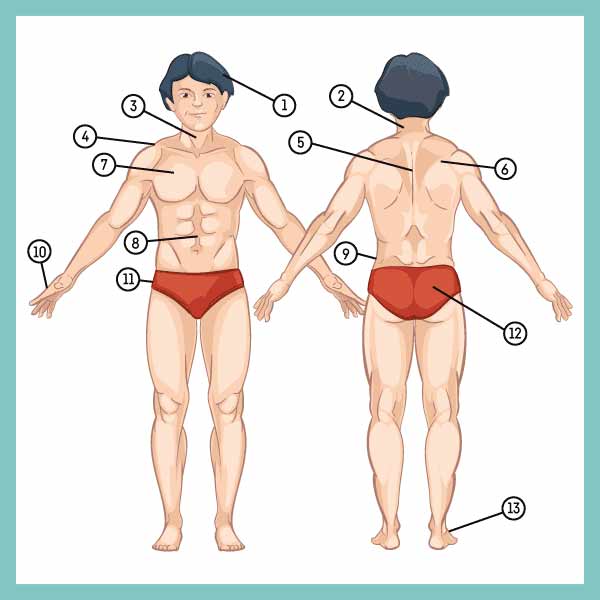
| Number | English | Pronunciation | Farsi | Sound |
|---|---|---|---|---|
| 0 | body | badan | بَدَن | |
| 1 | head | sar | سَر | |
| 2 | neck | gardan | گَردَن | |
| 3 | throat | galu | گََلو | |
| 4 | shoulder | šâne(h) | شانه | |
| 5 | back | pošt | پُشت | |
| 6 | scapula | ketf | کِتف | |
| 7 | chest | sine(h) | سینه | |
| 8 | belly | šekam | شِکَم | |
| 9 | waist | kamar | کَمَر | |
| 10 | hand | dast | دَست | |
| 11 | pelvis | lagan | لَگَن | |
| 12 | hip | bâsan | باسَن | |
| 13 | foot | pâ | پا |
The Head Parts in Persian
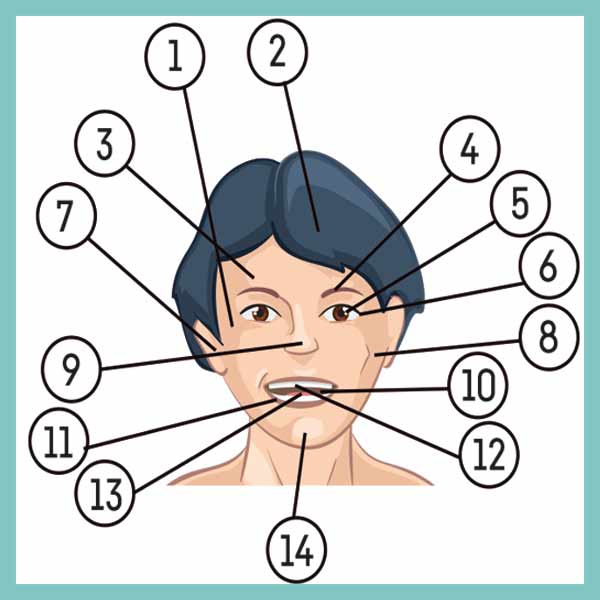
| Number | English | Pronunciation | Farsi | Sound |
|---|---|---|---|---|
| 0 | head | sar | سَر | |
| 1 | face | surat | صورَت | |
| 2 | hair | mu | مو | |
| 3 | forehead | pišâni | پیشانی | |
| 4 | eyebrow | abru | اَبرو | |
| 5 | eye | čašm | چَشم | |
| 6 | eye lashes | može(h) | مُژه | |
| 7 | ear | guš | گوش | |
| 8 | cheek | gune(h) | گونه | |
| 9 | nose | bini | بینی | |
| 10 | mouth | dahân | دَهان | |
| 11 | lip | lab | لَب | |
| 12 | tooth | dandân | دَندان | |
| 13 | tongue | zabân | زَبان | |
| 14 | chin | čâne(h) | چانه |
The Arm Parts in Persian
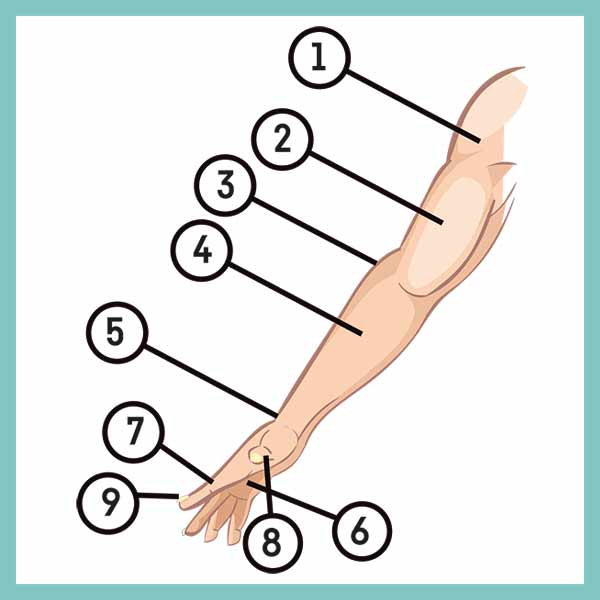
| Number | English | Pronunciation | Farsi | Sound |
|---|---|---|---|---|
| 0 | hand/arm | dast | دَست | |
| 1 | shoulder | šâne(h) | شانه | |
| 2 | arm | bâzu | بازو | |
| 3 | elbow | ârenj | آرِنج | |
| 4 | forearm | sâed | ساعِد | |
| 5 | wrist | moč-e dast | مُچِ دَست | |
| 6 | palm | kaf-e dast | کَفِ دَست | |
| 7 | finger | angošt | اَنگُشت | |
| 8 | toe | šast | شَست | |
| 9 | nail | naxon | ناخُن |
The Leg Parts in Persian
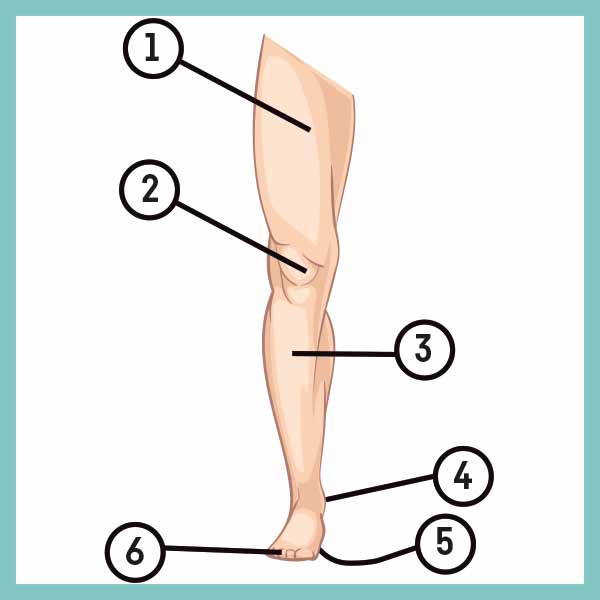
| Number | English | Pronunciation | Farsi | Sound |
|---|---|---|---|---|
| 0 | leg | pâ | پا | |
| 1 | thigh | rân | ران | |
| 2 | knee | zânu | زانو | |
| 3 | human leg | sâq | ساق | |
| 4 | ankle | quzak | قوزک | |
| 5 | sole of foot | kaf-e pâ | کَفِ پا | |
| 6 | finger | angošt | اَنگُشت |
Internal Organs in Persian
| English | Pronunciation | Farsi | Sound |
|---|---|---|---|
| thyroid | tiro’id | تیروئید | |
| thymus | timus | تیموس | |
| liver | kabed | کَبِد | |
| stomach | me’de(h) | مِعده | |
| pancreas | pânkrâs | پانکراس | |
| intestines | rude(h) | روده | |
| lungs | riye(h) | ریه | |
| kidney | koliye(h) | کُلیه | |
| urinary system | dastgâh-e edrâri | دَستگاهِ اِدراری | |
| reproductive system | dastgâh-e tolid-e mesl | دَستگاهِ تولیدِ مِثل |
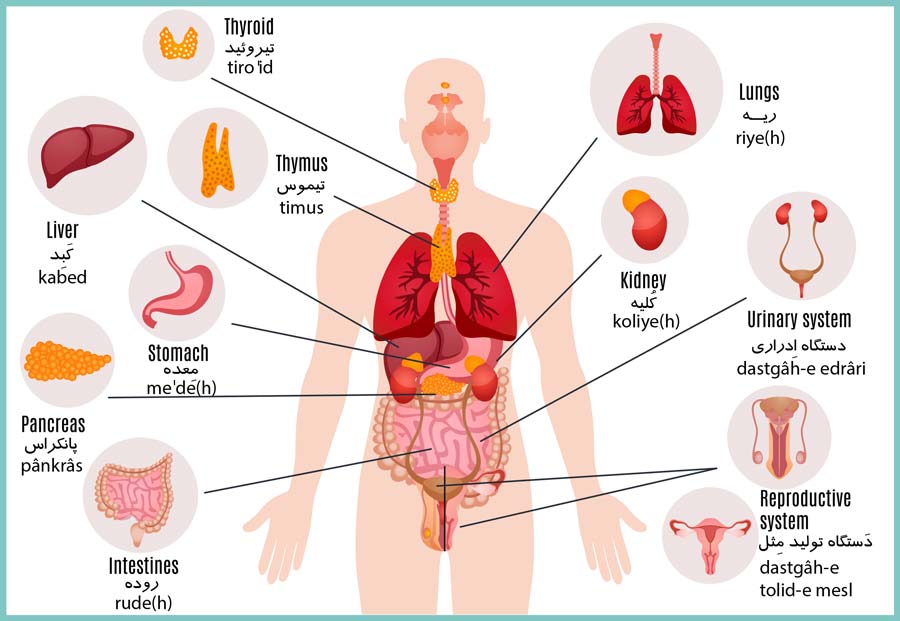
By the way, it is good to remind you that in spoken Farsi, we sometimes change the pronunciations of words based on Persian phonological rules. So, in this part, you may notice that the audio file does not completely comply with the written forms. For instance, dahân, pišâni, čašm, and dandân are changed into, dahan, pišuni, češm, and dandun.
| Written | Spoken |
|---|---|
| dahân | dahan |
| čašm | češm |
| pišâni | pišuni |
| čâne(h) | čune(h) |
| šâne(h) | šune(h) |
| rân | run |
| dandân | dandun |
| zabân | zabun |
| jegar | jigar |
Why to learn Farsi ..? To help you learn Farsi, our experienced Online Farsi tutors in FarsiMonde provide you with the best online Farsi classes and offer you the best Farsi learning methods.

This is very good website for Farsi learner, because it is clear, simple, it includes pronunciations and sounds.
Thank you
Thank you! You can ask us anything about Farsi if you want to learn more!
Love this thanks!
Thanks for your attention!
Ver, helpful
You’re welcome!